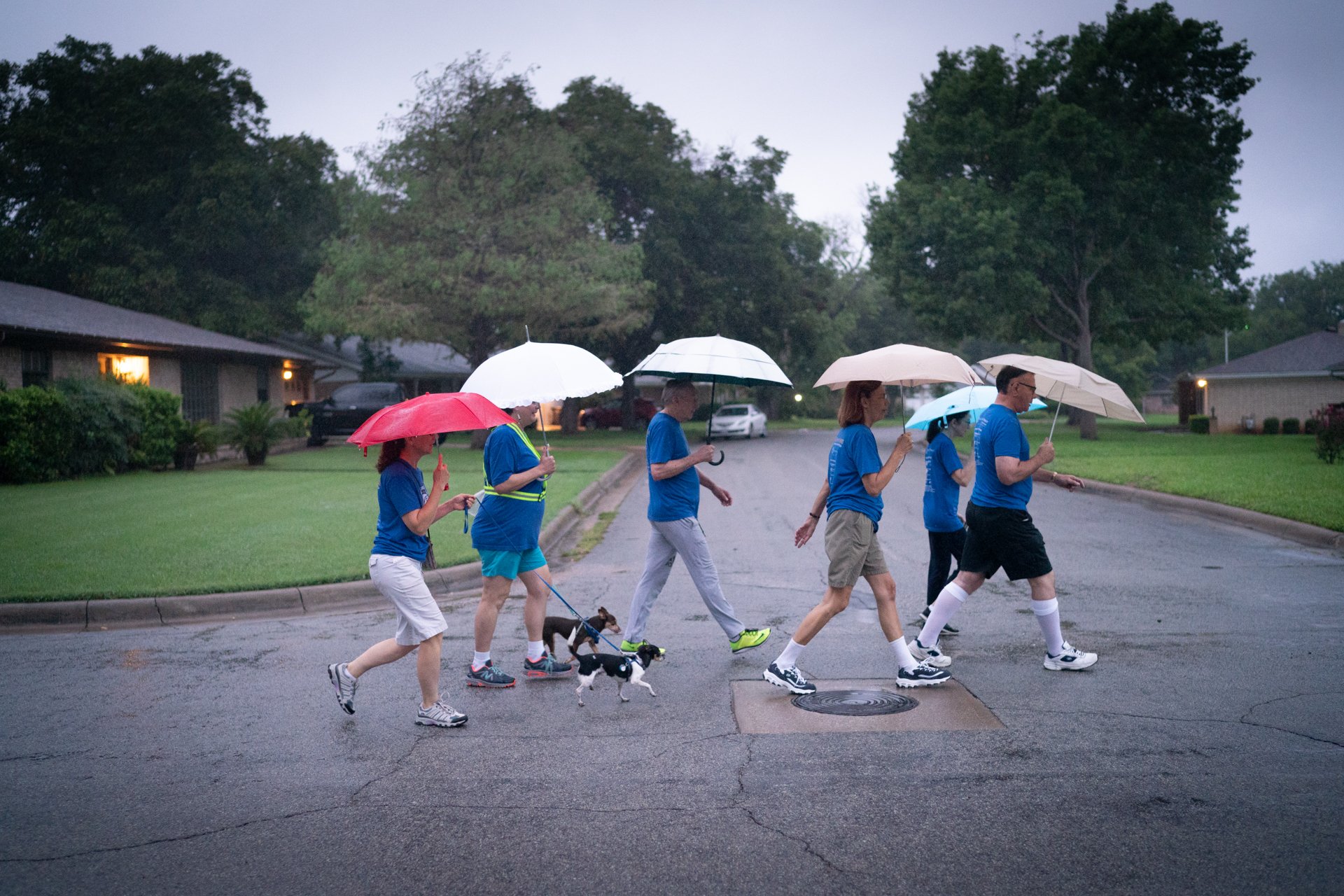Every morning, rain or shine, a group of White Lake Hills residents meet at 7 a.m. to get in their steps and share the issues of the day. These Walking Moais and Blue Zones Project have helped this once-disconnected neighborhood build stronger social connections.

Every day at 7 a.m., Linda Fulmer steps outside her front door to join a handful of her White Lake Hills neighbors for their usual walk. The group has become almost like family—supporting one another through life’s joys as well as challenges as they walk through their East Fort Worth neighborhood.
When Linda first moved to the area, White Lake Hills seemed divided between elderly, original residents, and newer families who moved in over the years. Like many neighborhoods today, residents rarely interacted or even saw each other from day to day. Then Linda heard about Blue Zones Project – and that changed. “We knew we needed to build some bridges between the generations,” she said. “After hearing about Blue Zones Project, I thought, well, that’s a good way to expand the neighbor-to-neighbor connections.”
A key principle of Blue Zones Project involves forming the “right tribe,” a social circle that supports healthy behaviors. In Okinawa, Japan—one of the world’s original Blue Zones—people formed Moais®, groups of 5 to 8 friends that commit to each other for life. Blue Zones Project helped Linda launch Potluck Moais, small groups that met regularly to share healthy recipes and good conversation. A few months later, Linda and her neighbors started Walking Moais, which met to walk through the neighborhood at least once a week. A member of Linda’s walking group, Kathlynn Stone, developed a plan to reach the neighborhood’s most isolated residents. She formed a neighborhood committee to identify all the seniors in the neighborhood who might need assistance in case of emergency.
The neighborhood’s efforts earned it the designation of Blue Zones Project Participating Organization. It also caught the attention of Dan Buettner, the National Geographic Fellow whose research into the world’s Blue Zones forms the basis of Blue Zones Project. Buettner highlighted the neighborhood in his book, “The Blue Zones of Happiness,” and they’ve been featured in local media stories.
Linda says Blue Zones Project definitely contributed to a higher quality of life in her neighborhood. “Relationships are central to health, and it is very difficult to become healthy if one is isolated and alone,” she said. “Blue Zones Project provided us the framework to create stronger bonds.”